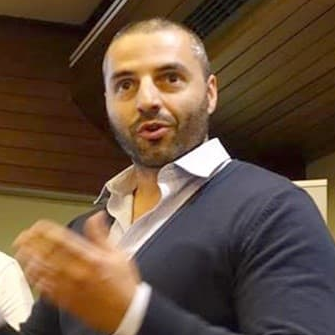Emerging Developments in Integrative and Complementary Medicine: Advancements in Research and Clinical Applications
A special issue of Healthcare (ISSN 2227-9032).
Deadline for manuscript submissions: 30 June 2024 | Viewed by 5826
Special Issue Editor
2. Faculdade de Engenharia da Universidade do Porto, 4200-465 Porto, Portugal
3. CTEC—Centro Transdisciplinar de Estudos da Consciência, Universidade Fernando Pessoa, 4249-004 Porto, Portugal
Interests: biomedical engineering; parameterization of TCM diagnosis and therapeutics; acupuncture; Qigong; meditation; biofield phenomena; focused intention
Special Issue Information
Dear Colleagues,
In recent decades, there has been a growing demand for complementary and alternative medicine (CAM) modalities in Western culture. To integrate CAM, such as Traditional Chinese Medicine (TCM), into Western healthcare systems and research, a pragmatic, science-based approach is necessary. This process involves a standardization effort that encompasses diagnosis to therapeutics and combines ancient knowledge with modern science and technology. A rational communicable theory, scientific proof of efficacy and safety, and quality control are essential requirements. Validated technological methods must be employed, or even developed, to measure TCM-related effects objectively.
A well-established TCM diagnosis, like in Western medicine, reflects the functional vegetative state of the patient and guides therapy allocation to symptoms. TCM treatment involves, for example, the systematic stimulation of acupoints on the skin. The success of acupuncture has led to extensive studies on the conduits system or channels, which is the foundation of traditional acupuncture theory. Techniques such as acupuncture and "Qigong" may activate the self-organizing system of an organism, leading to fundamental improvements in structure and function beyond symptomatic relief. This research area has broad implications in medicine and has the potential to stimulate the scientific community's understanding of human regulation and physiological changes associated with these practices.
We are looking forward to receiving contributions related to fundamental research and clinical applications of TCM modalities, which include but are not limited to acupuncture, moxibustion, Chinese herbs and dietetics, Qigong, Tai Chi, Tuina, automatic diagnosis systems, other CAM modalities,as well as studies exploring biofield phenomena and intention.
Dr. Luís Carlos Matos
Guest Editor
Manuscript Submission Information
Manuscripts should be submitted online at www.mdpi.com by registering and logging in to this website. Once you are registered, click here to go to the submission form. Manuscripts can be submitted until the deadline. All submissions that pass pre-check are peer-reviewed. Accepted papers will be published continuously in the journal (as soon as accepted) and will be listed together on the special issue website. Research articles, review articles as well as short communications are invited. For planned papers, a title and short abstract (about 100 words) can be sent to the Editorial Office for announcement on this website.
Submitted manuscripts should not have been published previously, nor be under consideration for publication elsewhere (except conference proceedings papers). All manuscripts are thoroughly refereed through a single-blind peer-review process. A guide for authors and other relevant information for submission of manuscripts is available on the Instructions for Authors page. Healthcare is an international peer-reviewed open access semimonthly journal published by MDPI.
Please visit the Instructions for Authors page before submitting a manuscript. The Article Processing Charge (APC) for publication in this open access journal is 2700 CHF (Swiss Francs). Submitted papers should be well formatted and use good English. Authors may use MDPI's English editing service prior to publication or during author revisions.
Keywords
- acupuncture and moxibustion
- Chinese herbs and dietetics
- Qigong and Tai Chi
- tuina and cupping
- auriculotherapy, hand acupuncture, and reflexology
- automatic diagnosis systems
- laser and electrical stimulation of acupoints
- meditation and focused intention
- biofield phenomena
- other CAM modalities






